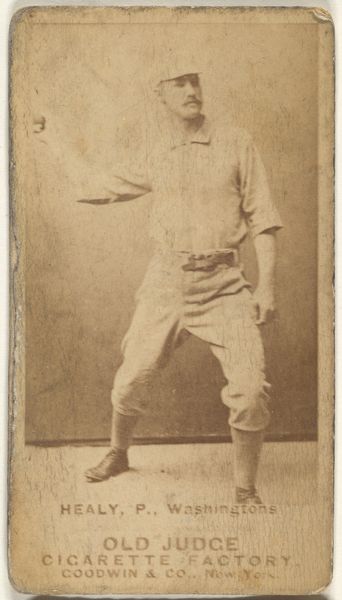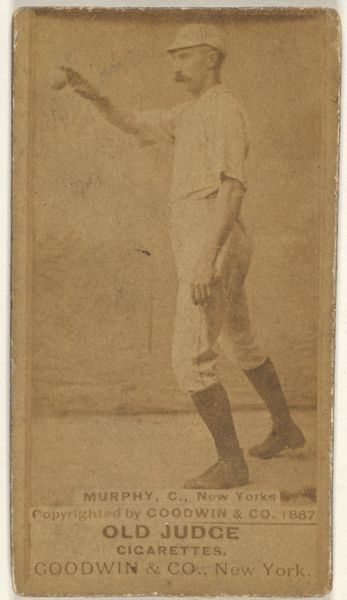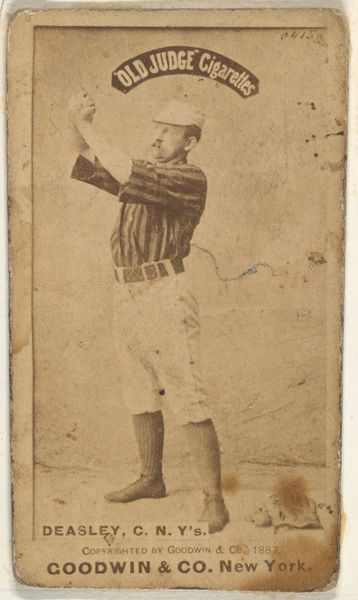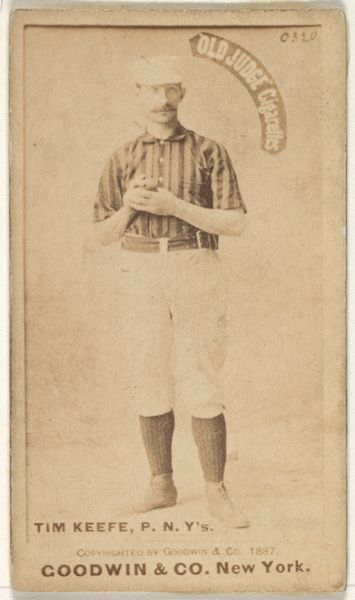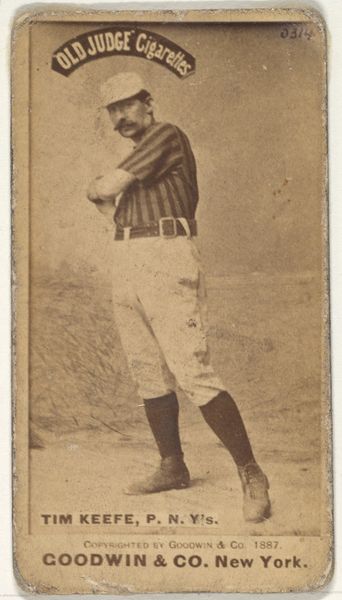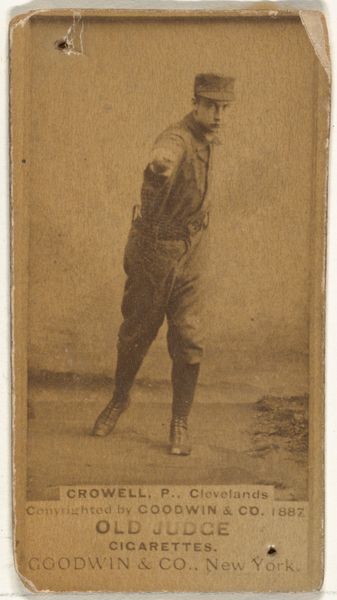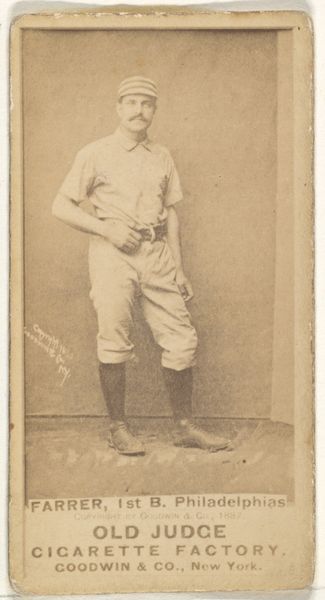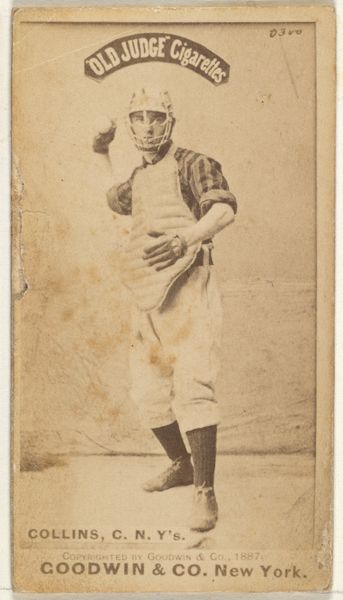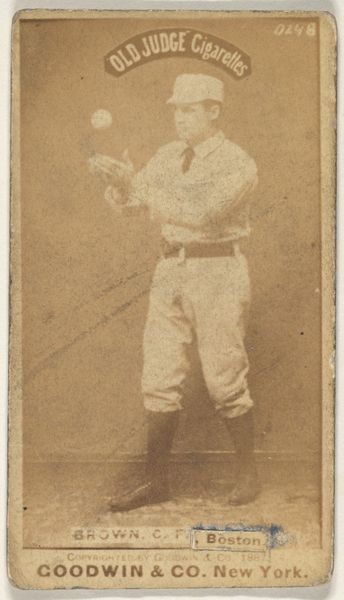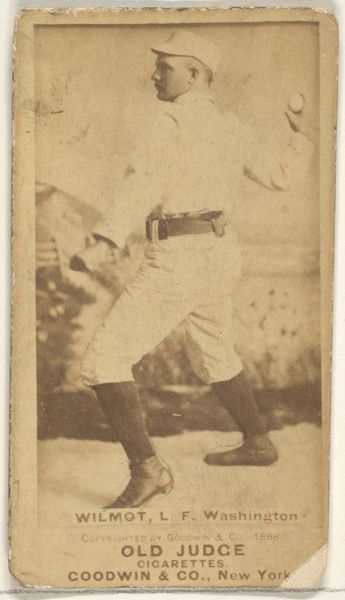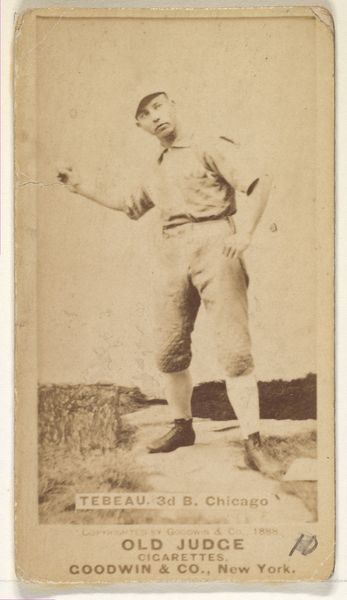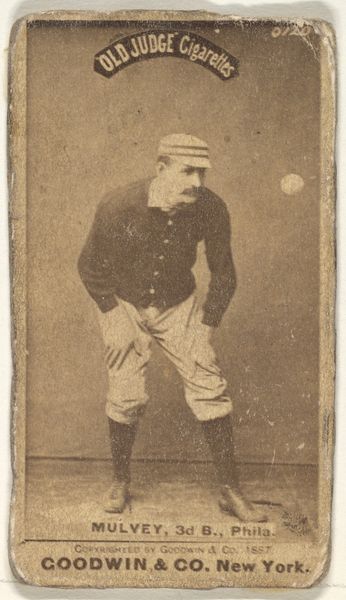
Danny Richardson, 2nd Base, New York, from the Old Judge series (N172) for Old Judge Cigarettes 1888
0:00
0:00
drawing, print, photography, collotype
#
portrait
#
drawing
# print
#
baseball
#
photography
#
collotype
#
coloured pencil
#
genre-painting
Dimensions: sheet: 2 11/16 x 1 3/8 in. (6.9 x 3.5 cm)
Copyright: Public Domain
Curator: At first glance, this seems like an unassuming sepia-toned portrait, yet there is a fascinating story here. This is "Danny Richardson, 2nd Base, New York," from the "Old Judge" series (N172) for Old Judge Cigarettes, dating back to 1888. Editor: The image itself strikes me as quite ordinary; it feels posed and lacks action, unlike later, dynamic sports photography. The coloration also feels rather uniform with a limited range of texture or materials. Curator: That is what makes this piece significant; it isn't merely a portrait. The work’s genesis in a series produced by Goodwin & Company for marketing their "Old Judge Cigarettes." This highlights how mass production intersects with art and commerce. The Old Judge cards are an example of early baseball cards produced utilizing the collotype, a kind of early photomechanical process allowing mass printing of images with tonal subtleties not reproducible by normal halftone printing. This collapses traditional high/low art distinctions and brings an elevated art form into the realm of tobacco consumption. Editor: Precisely. We see how institutional contexts shape the reception of an image. Its value as a baseball card arguably overshadowed any artistic intent. It speaks to the relationship between sporting culture, corporate branding, and the visual construction of celebrity in the late 19th century. Think about it: people were essentially consuming imagery along with tobacco! Curator: Absolutely, the image has this sense of genre painting of common people in common trades – here with sport as work! Further study shows this example uses early colored pencil which opens interesting discussion of mark making with rudimentary tools on images meant to last. This image provides so much insight into social stratification as a kind of commercial exchange which further brings context to an otherwise simply stated photographic piece. Editor: Considering its location within the Met highlights a crucial point—how museums themselves validate objects, elevating what might otherwise be considered ephemeral ephemera into valued artifacts. And its aesthetic tells us of the shifting public and sporting values. The pose would be completely updated by new standards by the time the sport was in its Golden Age! Curator: I see the card now with more vibrant clarity, noting how its seemingly benign subject unveils the complicated story behind its creation, production, distribution, and eventually cultural recognition. Editor: Yes, and recognizing how baseball's cultural power intertwines with historical shifts in imagery and commerce encourages us to challenge conventional understanding in a public space.
Comments
No comments
Be the first to comment and join the conversation on the ultimate creative platform.
